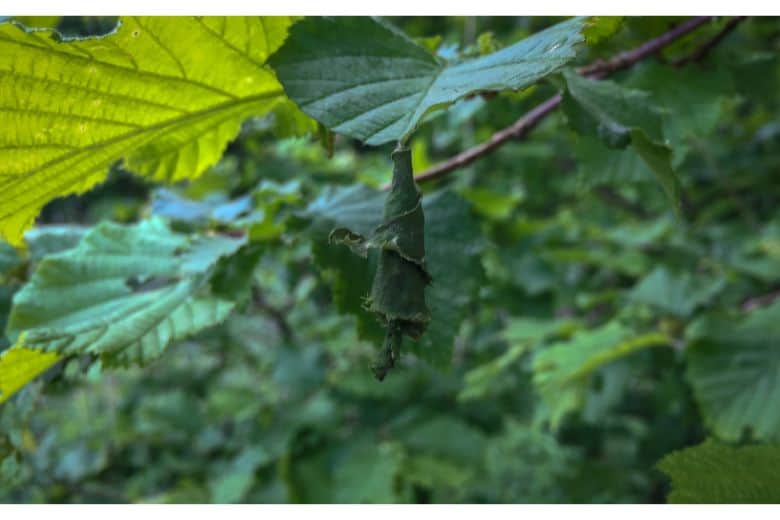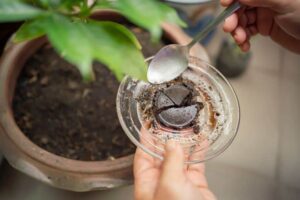
Dahlias are popular ornamental flowers grown in gardens for their colorful blooms that come in a wide variety of shapes and sizes. However, gardening problems can arise that prevent dahlias from looking their best.
One such issue is when the leaves start to curl up. Curled leaves signaling potential trouble, so it’s important to identify the cause so you can properly treat the problem.
Reasons for Curling Dahlia Leaves:
There are a few main reasons why dahlia leaves may start to curl:
1. Lack of Water
One of the most common causes of curled dahlia leaves is lack of adequate watering. Dahlias are water-loving plants that need around 1-2 inches of water per week through rain or irrigation. When the soil becomes dry, dahlia leaves will often curl up as a response to conserve moisture. Pay attention to soil moisture levels, especially if there has been a dry spell without rain. Add water as soon as the top few inches of soil are dry.
2. Too Much Water
On the other hand, soggy soil from overwatering can also induce leaf curling in dahlias. The soil needs to be allowed to dry out slightly between watering rather than staying perpetually wet. Overly wet soil leads to root rot which stresses the plant. Use a soil moisture meter or your finger to check the soil before watering. Let it partially dry out between watering.
3. Hot Weather Conditions
Intense sunlight and heat waves can cause dahlia leaves to fold up as a protective response to the harsh conditions. On very hot days, the leaves curl inwards to reflect sunlight and reduce water loss through transpiration. This type of leaf curling is usually temporary and the leaves will uncurl when temperatures cool down a bit. Ensuring proper watering can also help dahlias cope with hot spells.
4. Pests and Diseases
Certain insect pests and plant diseases are also capable of making dahlia leaves curl. Aphids, caterpillars, spider mites and powdery mildew are common culprits. Look closely at the leaves for any signs of infestation like tiny insects, webbing, or fuzzy spots. Pests suck plant juices resulting in curled or distorted growth. Take necessary control measures if pests are spotted.
5. Nutrient Deficiencies
Failing to provide the right nutrients can equally lead to curling leaves. Dahlias grown in nutrient-poor soil may exhibit curling due to lack of essential minerals like nitrogen, phosphorus or potassium. The application of a balanced organic fertilizer or compost tea can remedy this. Fertilize according to package instructions.
6. Genetics
Some dahlia varieties naturally have ruffled or curled foliage as part of their characteristics. The degree may increase under stress factors like drought, but the shape is not a problem per se. Try to identify your variety to rule out genetic leaf curling.
Solutions for Curling Dahlia Leaves:
Now that we understand the root causes, here are some effective solutions to uncurl leaves and restore healthy dahlia growth:
- Water consistently. Check soil moisture daily and water when the top few inches are dry. Waterlogged soil can damage roots.
- Apply a 2-4-inch organic mulch layer around plants to retain soil moisture, suppress weeds and keep roots cool.
- Fertilize monthly with a balanced organic fertilizer from spring to fall, following label instructions. This nourishes nutrient-hungry dahlias.
- Control insects manually or with organic, target-specific pesticides. Isolate or destroy badly infested foliage.
- Prune away diseased leaves and destroy them. Disinfect pruning shears between cuts.
- Shade leaves with a barrier like cloth or cardboard on hot afternoons to protect from sun scorch.
- Provide support and staking if leaves are curling due to exposure of too much leaf surface in windy conditions.
- Water more deeply but less frequently on very hot days. Early morning or evening is best.
- Give leaves space to breathe by planting dahlias with adequate spacing between plants.
- Pick off pest-free foliage to induce vigorous new growth as the plant redirects energy to leaf production.
With diligent care through proper watering, fertilizing, pest control and cultural practices, curled dahlia leaves should gradually uncurl and take on a healthier appearance within a week or two. Be patient while the plant recovers from stress factors.
Preventing Leaf Curling in the Future:
Taking some preventative steps can help avoid leaf curling problems on dahlias going forward:
- Choose a sunny planting location with well-draining, organic matter-rich soil amended before planting. Dig in 2-4 inches of compost.
- Space plants 18-24 inches apart depending on size to allow for good airflow and reduce moisture issues.
- Plant in spring after last frost date once soil has warmed to at least 60°F. This encourages strong root establishment.
- Water deeply at the soil level 1-2 times weekly based on conditions, rainfall. Use a soaker hose or drip irrigation for efficiency and to avoid wetting foliage.
- Scout plants regularly, at least weekly, to catch and treat any pests in early stages before significant damage occurs.
- Incorporate organic matter like compost, manure or grass clippings into planting beds each fall before winter to increase soil fertility and water retention.
- Test soil pH and amend as needed to keep in slightly acidic range around 6-7 for optimal nutrition availability.
- Rotate crop placement annually to prevent buildup of soilborne diseases. Do not plant dahlias in same spot twice in a row.
- Mulch in spring once soil has warmed to conserve moisture and suppress weeds. Refresh mulch layer as needed.
- Provide support using stakes, cages or trellises to prevent wind rock from damaging or stressing tall varieties, while allowing air movement.
Conclusion
Following best cultural practices sets your dahlias up for long term success. With proper care, the leaves should remain unfurled all season long for maximum plant growth, vigor and blooming! Let me know if you have any other dahlia questions.






One Comment